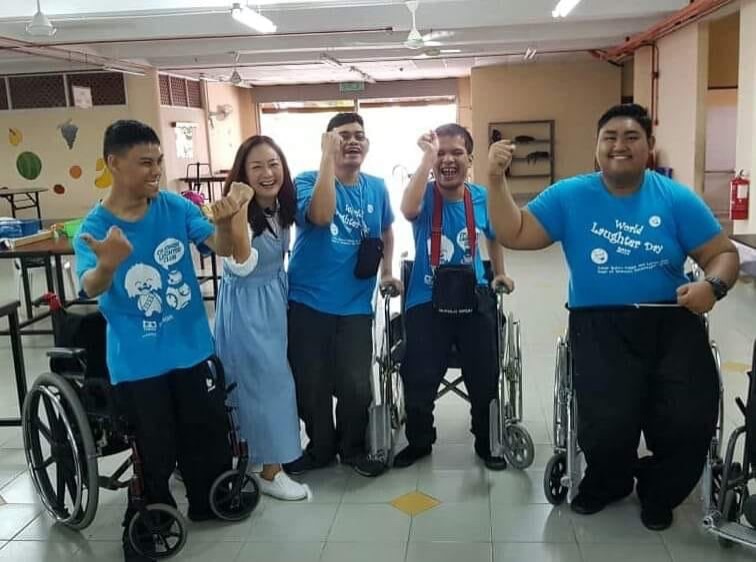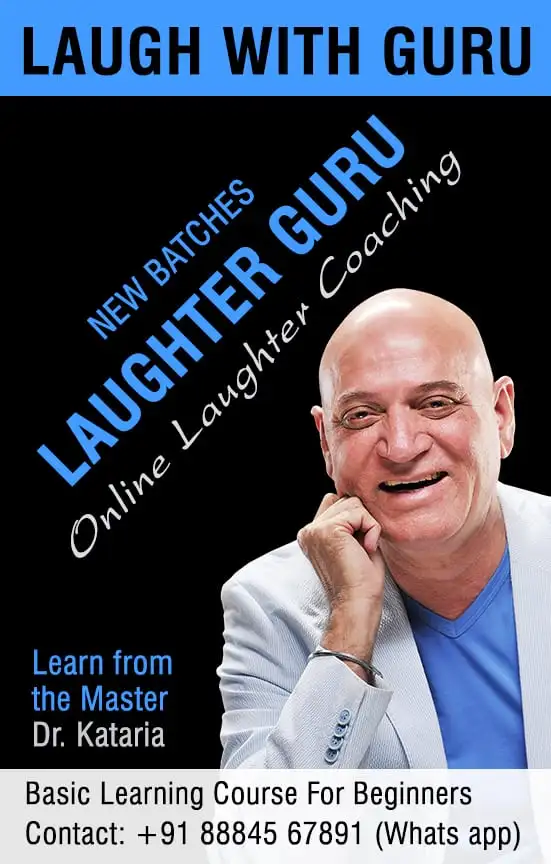
Karen Kong, a Laughter yoga teacher from Malaysia, had an extraordinary experience while working with a group of Cerebral Palsy patients. Every Wednesday, she visits the "Crystal Center" to conduct Laughter yoga sessions for these children. Over the course of a year, the children had developed a deep fondness for these classes.
During a session one morning, several students who had been confined to wheelchairs for an extended period caught everyone by surprise. One of them managed to stand up on their own for the first time in years. This remarkable feat served as an inspiration for the other wheelchair-bound students, who began attempting to stand up using their wheelchair handrails.
Against all odds, three more children who had never witnessed themselves standing managed to do so, creating a truly unimaginable moment. The entire group rejoiced and applauded in celebration of this remarkable accomplishment.
This incident exemplifies the transformative power of Laughter yoga. It demonstrates how laughter, coupled with positive energy and encouragement, can have a profound impact on individuals, even in the face of physical challenges. The experience was nothing short of magical.
About Cerebral Palsy
Cerebral palsy (CP) is a group of permanent movement disorders that appear in early childhood due to damage to the developing brain. It affects muscle control and can result in various physical and developmental challenges. Key points about cerebral palsy include:
Causes: The exact cause is often unknown, but factors like infections, maternal health conditions, labour difficulties, and brain injuries contribute to its development.
Types: Cerebral palsy is classified into spastic, dyskinetic, ataxic, and mixed types based on affected body areas and movement impairments. Spastic CP is the most common type, characterized by stiff muscles and awkward movements.
Symptoms: Symptoms vary but can include muscle stiffness or floppiness, abnormal reflexes, poor coordination, balance and posture difficulties, involuntary movements, trouble with fine motor skills, and delays in reaching developmental milestones.
Management: While there is no cure, treatments such as physical therapy, occupational therapy, speech therapy, assistive devices, medications, and surgery can help manage the condition and improve quality of life.
How Laughter Yoga Helps Cerebral Palsy Patients
Physical exercise: Laughter yoga involves physical movements, such as stretching, clapping, and playful activities, which can help improve flexibility, muscle strength, and coordination. These exercises can be adapted to the abilities and limitations of individuals with cerebral palsy, providing them with a fun and engaging form of physical activity.
Improved respiratory function: Laughter yoga incorporates deep breathing exercises, which can help enhance lung capacity and respiratory function. This can be beneficial for individuals with cerebral palsy who may experience respiratory challenges or have difficulty with breath control.
Emotional well-being: Laughter has been shown to release endorphins, which are natural feel-good chemicals in the brain. Engaging in Laughter yoga sessions can promote a positive mood, reduce stress, and improve emotional well-being. This can be particularly beneficial for individuals with cerebral palsy who may face emotional challenges or experience higher levels of stress.
Social interaction: Laughter yoga is often done in groups, creating an environment for social interaction and connection. For individuals with cerebral palsy, who may face social isolation or have difficulty with communication and interaction, participating in laughter yoga sessions can provide an opportunity to engage with others in a supportive and inclusive setting.
Enhanced communication skills: Laughter yoga involves various playful activities and vocal exercises, which can help improve speech and communication skills for individuals with cerebral palsy. It can encourage vocalization, breath control, and articulation, supporting the development of speech and language abilities.

